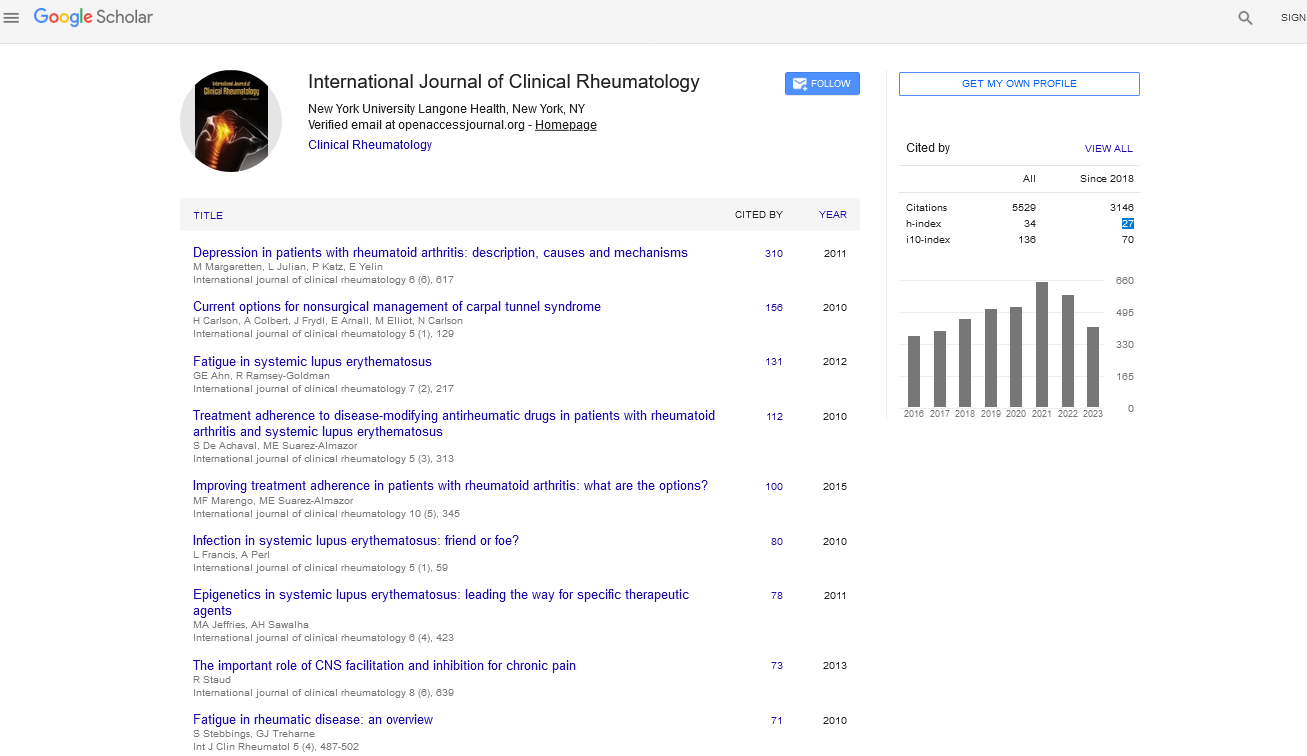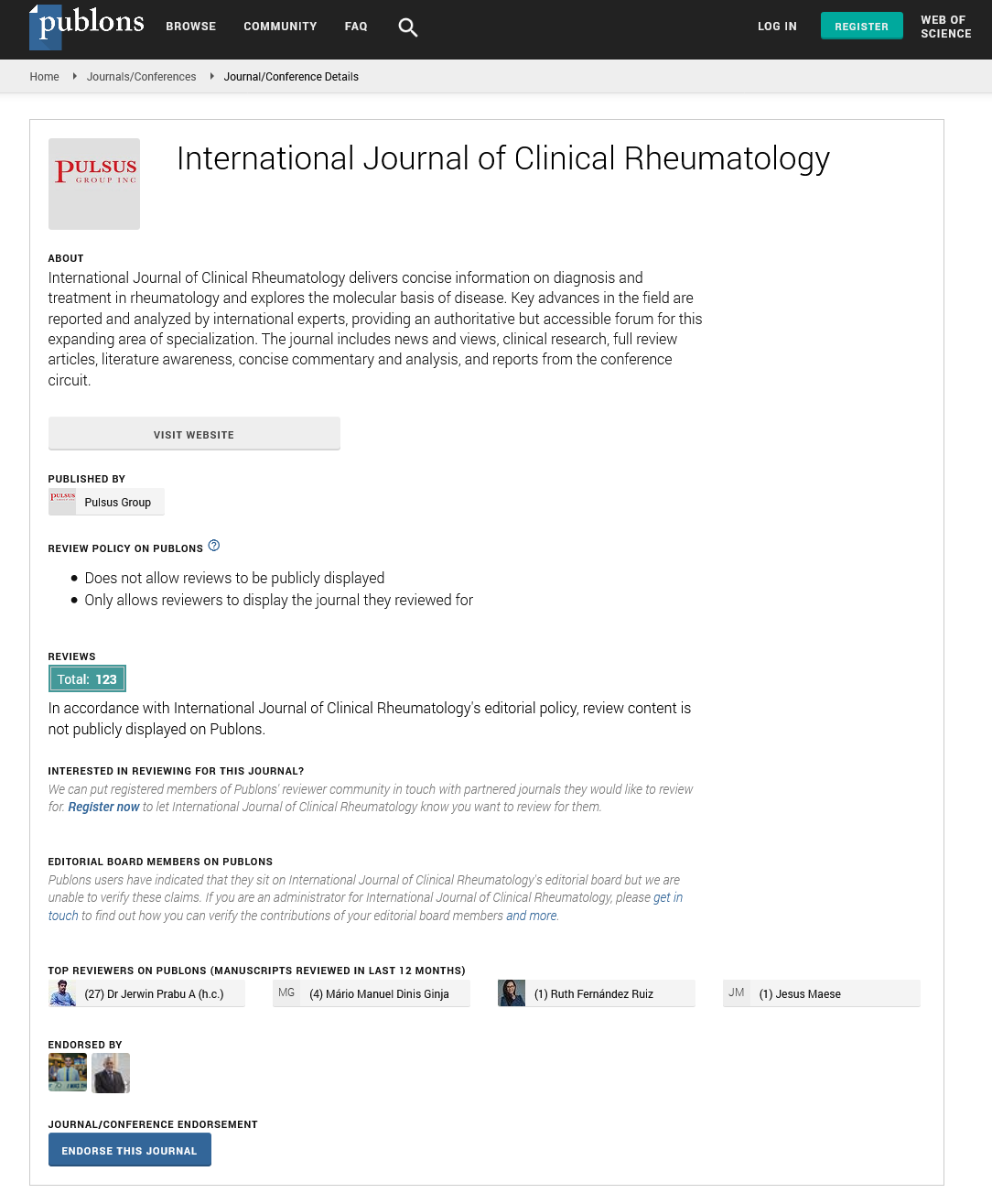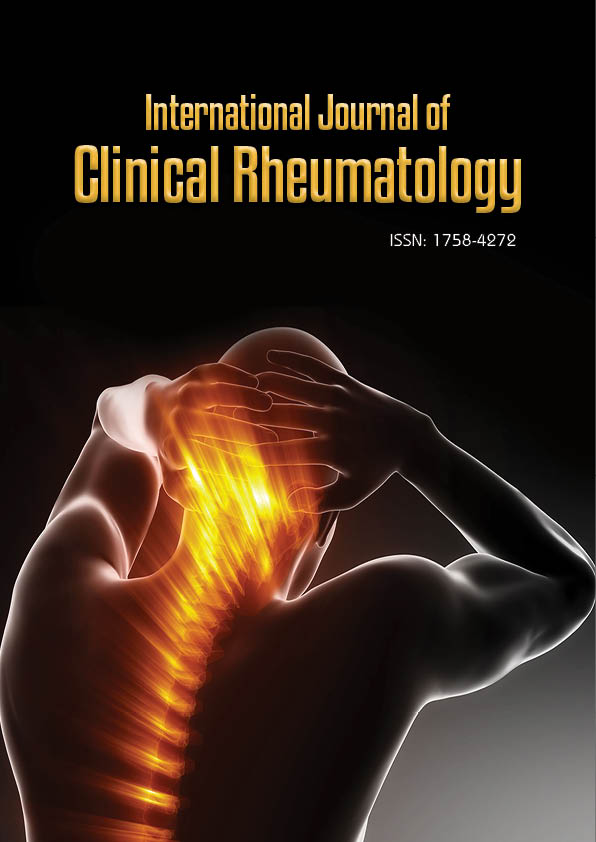Case Report - International Journal of Clinical Rheumatology (2025) Volume 20, Issue 8
Unmasking Lupus in a Resource- Limited Setting: When Sepsis Wasn’t the Culprit: A Case Report
Mark Paul Mayala*, Peter Shadrack Mabula, Genet Kifle, Nesar Ahmad Hamraz and Chrystina Russell
Village Health Works, Women Health Pavilion, Kigutu Hospital, Kigutu, Burundi
- *Corresponding Author:
- Mark Paul Mayala
Village Health Works, Women Health Pavilion, Kigutu Hospital, Kigutu, Burundi
E-mail: markmayala90@gmail.com
Received: 01-Aug-2025, Manuscript No. fmijcr-25-169583; Editor assigned: 04- Aug-2025, Pre-QC No. fmijcr-25-169583 (PQ); Reviewed: 18-Aug-2025, QC No. fmijcr-25-169583; Revised: 23-Aug- 2025, Manuscript No. fmijcr-25-169583 (R); Published: 29-Aug-2025, DOI: 10.37532/1758-4272.2025.20(8).422-425
Abstract
This case highlights the diagnostic challenge of systemic lupus erythematosus (SLE) in a resourcelimited rural setting where infectious diseases are commonly prioritized. A 16-year-old boy presented with prolonged fever, severe fatigue, generalized edema, and weakness, initially managed empirically for sepsis and tuberculosis without improvement. Multiple antibiotics and anti-TB treatment failed, and autoimmune workup was delayed due to cost constraints. Upon clinical deterioration, corticosteroids were initiated empirically with rapid improvement. Later, positive ANA and anti-SmD1 antibodies confirmed SLE. The case emphasizes the importance of clinical suspicion and adaptability in low-resource settings, where autoimmune diseases may go unrecognized. Timely corticosteroid use became both diagnostic and therapeutic. In resourceconstrained environments, clinical intuition and flexibility can be lifesaving when laboratory support is lacking, especially in cases of treatable but underdiagnosed conditions like lupus.
Keywords
Systemic lupus erythematosus•Autoimmunity• Resource-limited settings•Lupus mimicking sepsis
Introduction
Systemic lupus erythematosus (SLE) is a chronic autoimmune condition with highly variable presentations. In resource-limited settings, where diagnostic access is limited and infections dominate clinical priorities, lupus may remain undetected for long periods. Diagnostic confusion with sepsis or tuberculosis is common due to overlapping systemic symptoms. Immunological tests such as ANA and anti-dsDNA are rarely available in rural Africa, delaying appropriate care and placing patients at risk of death or long-term complications [1,2]. This case illustrates a diagnostic and therapeutic turning point that hinged not on laboratory capacity but on clinical judgment and community goodwill. It also demonstrates how severe autoimmunity can mimic infection and how a single act such as sponsoring a test can unveil the true diagnosis and change a patient's life.
Patient and Observation
Patient information: A 16-year-old boy from Kigwena village in rural Burundi, was previously healthy until May 2025. The third born among eight siblings to smallholder farmer parents, he had no formal education and limited access to healthcare. He presented with a two-month history of progressive fatigue, joint pain, abdominal swelling, and weight loss. Initial treatment with traditional medicine and undocumented therapies at a local clinic provided no relief. By the time he arrived at Village Health Works, he was unable to walk, visibly wasted, and covered in sweat from ongoing fever. His history revealed no alcohol or tobacco use, and there was no family history of autoimmune diseases [Table 1].
| Date/Period | Event |
|---|---|
| May 2025 | Developed back pain and joint pain |
| June 2025 | Progressed to generalized pain, weakness, abdominal swelling |
| June–July 2025 | Treated with undocumented medications and traditional remedies |
| Late July 2025 | Admitted to VHW with persistent fever, severe edema, and inability to walk |
Table 1: Timeline and History of Presenting Illness
Clinical Findings
Persistent fever (36.2°C to 39.5°C), tachycardia (HR > 100 bpm), respiratory rate 18–30/min, SpO₂ fluctuating 88–98% on room air (Figure 1). Pulmonary exam revealed reduced breath sounds at the left lower zone, and bibasal crackles more prominent on the right. Abdominal exam revealed severe ascites; paracentesis was attempted twice but unsuccessful. No cardiac murmur, S1S2 sounds were normal. No lymphadenopathy or skin rashes noted. The patient appeared bedbound, fatigued, and malnourished.
Diagnostic assessment
CBC showed mild anemia with high leukocytosis. Liver, renal, and electrolyte panels were normal. Urinalysis revealed no proteinuria. Chest X-ray showed bilateral patchy infiltrates more prominent on the right and possible left lower zone effusion (Figure 2), which correlated with reduced breath sounds and crackles on auscultation. Malaria test was negative. TB was empirically treated but stopped after lack of improvement. Microbiological cultures were unavailable. Autoimmune screening funded by a local donor revealed positive ANA and anti-SmD1 antibodies, confirming lupus.
Diagnostic challenges: No access to cultures or advanced imaging. Immunologic tests were delayed due to financial limitations. Lupus classification tools were not available.
Diagnosis: Highly probable Systemic Lupus Erythematosus (SLE) based on serology and dramatic steroid response.
Prognosis: Fair, but impacted by poverty, medication access issues, and need for long-term follow-up.
Therapeutic Interventions
Empirical antimicrobial regimen: The patient was initially treated with IV Augmentin and Azithromycin for common and atypical pathogens. Due to persistent fever and leucocytosis, treatment escalated to Vancomycin and Meropenem, followed by Doxycycline for atypical and zoonotic infections. Empiric anti-TB treatment was initiated and later discontinued due to lack of clinical improvement.
Immunosuppressive therapy: The patient received IV Hydrocortisone, which was then transitioned to oral Prednisolone 60 mg/day, tapered gradually to 5 mg/day.
Response: Fever resolved by Day 3 after initiation of steroids. Ascites improved. Patient began ambulating independently within 10 days. No further signs of active infection were observed.
Follow-Up and outcomes: The patient was discharged walking independently. Vitals were stable. He was maintained on low-dose steroids. Outpatient follow-up was planned, though socioeconomic factors may challenge long-term adherence and medication refill reliability.
Adherence and tolerability: Adherence was good during hospitalization. Risk of non-adherence post-discharge is high due to poverty and limited access to medications.
Adverse Effects: None observed during hospitalization.
Patient Perspective: “I was so tired and thought I would never get better. At the hospital they didn’t stop caring, even when I wasn’t improving. The day my fever stopped, I felt like I came back to life. I’m happy I can walk again. Thank you for not giving up.” Translated from patient’s mother tongue language (Kirundi).
Informed Consent
Written informed consent was obtained from the patient and his guardians to publish this case and accompanying images (Annex 1).
Discussion
SLE can mimic sepsis, brucellosis, and tuberculosis, particularly in tropical regions where clinicians default to infection-first frameworks. This overlap delays appropriate diagnosis in settings where immunological panels are often unavailable [1–3]. In this case, corticosteroids not only served as treatment but as a diagnostic trial, their success confirmed a hidden autoimmune process. The case reveals the diagnostic reliance on empiricism, serial therapeutic trials, and patient response over laboratory confirmation. When a local donor funded the antibody tests, lupus was confirmed serologically. The quick resolution after steroid initiation made the diagnosis undeniable.
Broader perspective
This case reflects a hidden epidemic in rural, underdiagnosed regions: the true prevalence of autoimmune disease may be significantly underestimated [2]. Rising type 1 diabetes in similar populations suggests a possible autoimmune cluster. Malnutrition, common in this adolescent, may modulate or unmask immune dysregulation, a topic that remains underexplored [3]. The lack of access to immunologic diagnostics means many such cases are mismanaged for years, often at great human cost. This story reinforces how improved awareness, training, and access to testing could transform outcomes for patients with systemic autoimmune conditions in underserved areas.
Conclusion
This case demonstrates how clinical intuition and flexible thinking can bridge the diagnostic gap in resource-limited settings. Autoimmune disease such as lupus should be considered in any young patient with prolonged systemic symptoms unresponsive to antimicrobial therapy. While definitive tools may be lacking, therapeutic trials with close monitoring and community support can help unmask life-threatening conditions.
Competing interests
The authors declare no competing interests.
Authors' Contributions
Mark Paul Mayala, Peter Shadrack Mabula, Genet Kifle and Nesar Hamraz, admitted the patient and were his attending physicians in the ward. Mark Paul Mayala guided the preparation of the manuscript. All authors read and approved the manuscript.
Acknowledgments
The authors acknowledge the cooperation they got from the patient. We also thank Prof. Jennifer Furin for her contribution and revision of the case.
References
- Tsokos GC. Systemic lupus erythematosus. N Engl J Med. 365(22), 2110-2121(2011).
- Lisnevskaia L, Murphy G, Isenberg D. Systemic lupus erythematosus. Lancet. 384(9957), 1878–1888(2014).
- Okpechi IG et al. Systemic lupus erythematosus in sub-Saharan Africa: a review. Int J Nephrol Renovasc Dis. 5, 153–163(2012).
Indexed at, Google Scholar, Crossref
Indexed at, Google Scholar, Crossref




